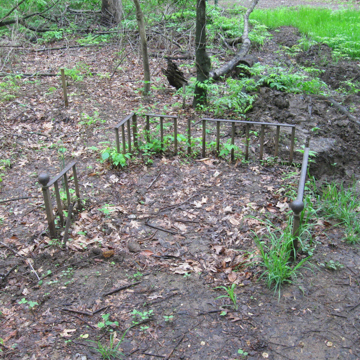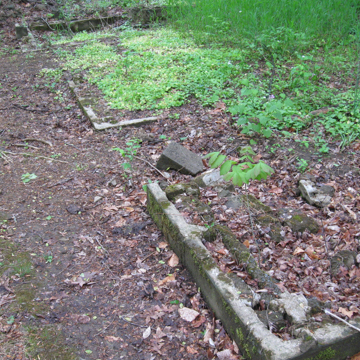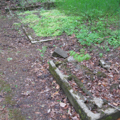Only foundations suggest the dozens of structures that made up a nationally famous mineral spring resort (1826–1852) and, later, amusement park (1886–1923). From the foot of the ridge sprang foul smelling but healthful chalybeate (iron rich) springs. Above the historic brow of the hill stood the Council Oak, labeled by resort promotors as a meeting place of George Washington and the Marquis de Lafayette; it died in 1993. Ground-penetrating radar has revealed the site of a group of Greek Revival houses designed by Thomas U. Walter for Philadelphian Matthew Newkirk (1835–1836), where a basketball court is now. Just east was the great Saratoga-like colonnaded hotel (1826, burned 1853). That hotel may have been the work of Benjamin Ferris, whose survey and sketches survive. Along Red Clay Creek runs the Wilmington and Western Railroad (CH30), the groundbreaking ceremony for which was held at this site in July 1871. Brandywine Springs became Delaware's first state park in 1951 but later came under county control (1970). Bridges have been rebuilt and signs installed to display historic photographs. Near the railroad, archaeology undertaken in 1993–1994 located the electrified entrance archway. Dozens of light sockets were unearthed, some still in working condition.
You are here
Brandywine Springs Park
If SAH Archipedia has been useful to you, please consider supporting it.
SAH Archipedia tells the story of the United States through its buildings, landscapes, and cities. This freely available resource empowers the public with authoritative knowledge that deepens their understanding and appreciation of the built environment. But the Society of Architectural Historians, which created SAH Archipedia with University of Virginia Press, needs your support to maintain the high-caliber research, writing, photography, cartography, editing, design, and programming that make SAH Archipedia a trusted online resource available to all who value the history of place, heritage tourism, and learning.


















